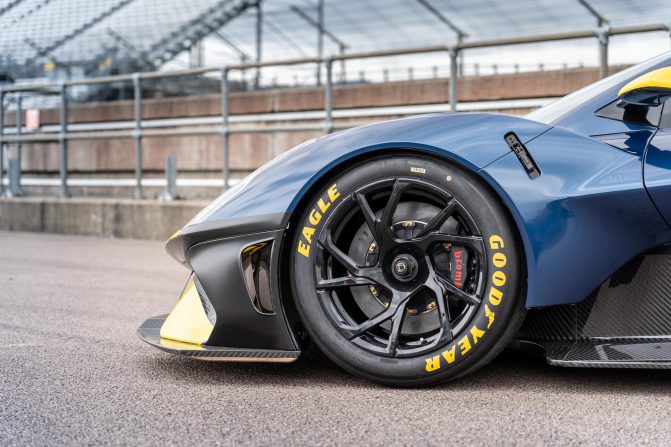The Pop-Up Headlight
There’s a certain mystique that surrounds the age-old ‘disappearance’ trick in the world of magic. With mankind being so accustomed to sight, and fixed on appearance, the sudden visual abandonment tickles the senses as the coin magically vanishes from the palm or the volunteer disappears from the performer’s stage.
Yet while magic audiences above the youthful age of 8 may find the disappearance trick to be old and tediously common, the case is not similar for car enthusiasts in regard to the pop-up headlight.
There are various reasons that can be utilised to help explain the petrolhead’s infatuation with hidden headlamps; some appreciate the human-like qualities of the opening and closing of the headlights, relating them to the opening and shutting of the eyelid, while others appreciate the manner in which the pop-up headlights complement the styling of the car. Or the reasoning may be simpler, because one can not deny that there have been some pretty incredible cars with pathways lit by ‘now you see them, now you don’t’.
Headlight History
This story of automotive luminescence begins on the bumpers of the front-wheel drive 1936 Cord 810 (pictured above), the hidden headlamp being the brainchild of Gordon Buehrig, an automotive designer at the Auburn Automobile Company in Auburn, Illinois, and his band of designers. This revolutionary design operated through dashboard cranks that raised and lowered modified Stinson airplane landing lights embedded in the fenders.
Fast forward six years, and the 1942 Desoto became the first mass-production automobile to feature this innovative hidden headlamp design, christened ‘Airfoil lights’ in printed advertisements by Desoto – the rhyming selling point exclaiming ‘Out of sight except at night.’
For a period of time though, the world had forgotten about the hideaway headlamp. Years went by with the paths of new motor cars illuminated by the conventionally exposed headlamp. Then, in 1962, along came the familiar four-cylinder buzz of the Lotus Elan, bringing the pop-up headlight back to the (hidden) limelight of automotive design. On this occasion, the hidden headlight gained a firmer footing in the auto industry, as Chevrolet’s second-generation Corvette Stingray featured the new lighting trend in 1963. Numerous American manufacturers soon continued the fad, albeit some preferring to conceal the headlight in the front grille rather than on top of the front fenders.
Improvement To Aerodynamics
Styling was not the sole reason for the appeal of the hidden headlight, however. For decades, sports cars, many of which enthusiasts have gawked at since gracing their bedroom walls, adopted the pop-up lights in order to cheat the air. Though there were, in most cases, merely marginal improvements in the car’s aerodynamics, enthusiasts can remain thankful for the desire to be sleek.
Regulations in the United States also contributed to the use of hidden headlamps in the automotive world. 1970s U.S. height requirements declared that headlights on cars needed to reach the height of 24 inches tall, and many manufacturers, not wishing to stray from the low height of the ideal sports car, employed the pop-up headlight in order to meet the requirement while still retaining the desired height of the car.
Ultimately however, Just as regulations aided in the expansive use of hidden headlamps, so did they contribute to the cessation of their use. More modern design regulations, in pursuit of improving the safety of the pedestrian, are opposed to upraised objects on the fronts of cars and thus manufacturers found attempting to retain pop-up headlights to be unnecessary. The pop-up headlight, having graced the faces of countless automotive legends over its spell in automotive design, observed its end in 2004 with the conclusion of production for the final Lotus Espirit and Chevrolet C5 Corvette.
The Legacy
Though ten years on from the end of pop-up headlights being featured on new production cars, hidden headlamps remain revered by enthusiasts as being brilliant cosmetic editions to already-extraordinary cars. With a brief moment of thought, soon one would realise that some of the most admired automobiles featured hideaway headlamps, and in nearly all of those cases the headlight design only helped to complement the car’s appearance.
So why are pop-up headlights so adored? There are countless reasons in truth, but I feel as if the primary reason is one unbeknownst to many petrolheads, yet one that is the case for all of them.
On many occasions in which I’ve been able to discuss with a fellow revhead our shared passion with cars, the ‘face’ of an automobile has often been mentioned. Be it that a car looks ‘angry’ or ‘sad,’ the recurring theme is that the person identifies a facial expression on something that is not human, or any other living thing for that matter. Without wanting to be overly scientific, this is likely because our brains are wired to recognize facial patterns, and the opening and closing of a hidden headlamp is something we relate to the rising and falling of an eyelid.
While that is a reasonable theory, the moment in which you spot a Ferrari F355 or a BMW M1 blasting by you, your first thoughts probably won’t be about hidden headlamps, facial expressions, and science.


I think ‘compliment’ should read ‘complement’.
Updated. Good spot!